Shield AI’s X-BAT promises to reshape the nature of drones
- By Alex Hollings
Share This Article
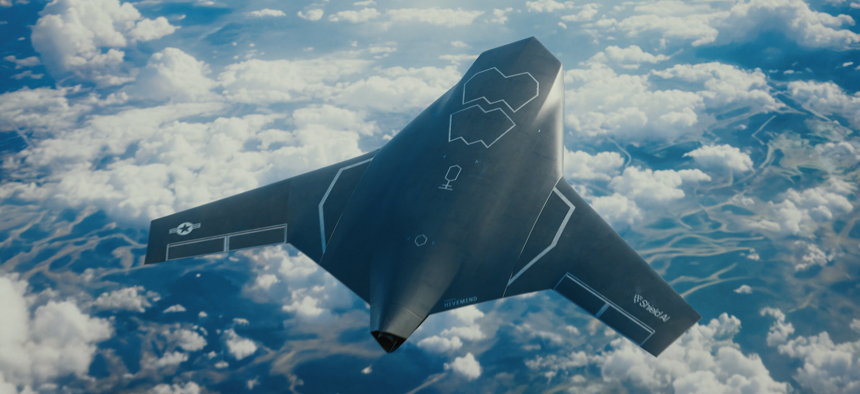
Every once in a while, a drone program emerges that stands out from the pack and that promise to reshape the nature of drones entirely. And that might just be how we’d describe ShieldAI’s newly unveiled X-BAT. This new drone platform promises to do more than any combat drone in the world can today, and more than many crewed fighters are capable of to boot.
Shield AI’s X-BAT isn’t a drone with some fighter capabilities… it’s a fighter that happens to be a drone. And that has the potential to be a very big deal.
This truly multi-role drone fighter has more in common with advanced jets like the F-35 than it does with uncrewed assets like the MQ-9 Reaper. It boasts a full onboard suite of advanced avionics including fire control radar, internal weapons bays capable of carrying air-to-ground and air-to-air loadouts. At the same time, it minimizes its radar detectability, has vertical take-off and landing capabilities, needs no runway to function, and offers a combat radius of more than 1,150 miles without refueling.
The drone was built from the ground up to leverage Shield AI’s HIVEMIND AI Autonomy Software which allows it to operate and complete its mission even when GPS and communications are jammed.
The F-35B is the only operational fighter in history to reach supersonic speeds and then land vertically. But even the most technologically advanced fighter in history still relies on runways, as it can’t take off vertically while carrying a combat load, and still requires at least 300-400 feet of runway to get airborne. That’s a fraction of what the F-35A, requires, but it can still be a limiting factor in combat.
But now, ShieldAI believes they’ve finally got the design and the technology to build a true multi-role fighter that’s entirely free of the need for runways. And while today, reducing the American military’s reliance on runways is a more pressing need than ever.
In the vast expanses of the Pacific, China has invested heavily into an arsenal of long-range weapon systems that include cruise missiles, ballistic missiles, kamikaze drones, and hypersonic weapons – all with the express purpose of wiping American military assets before they can ever get into the fight. Aircraft and runways would be targeted, as China will aim to reduce American combat capacity while simultaneously limiting the ability of reinforcements to use the same facilities in the aftermath.
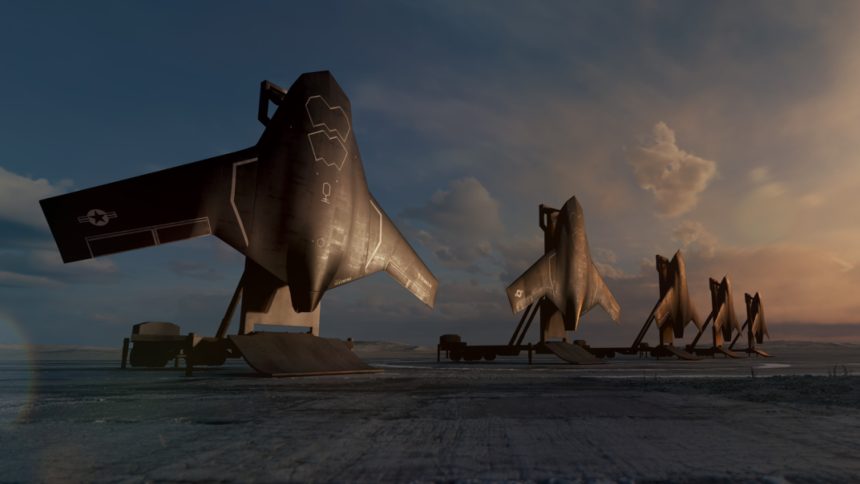
The Air Force is already planning to mitigate this likely scenario, primarily through the use of Agile Combat Employment, or ACE Operations, which involves distributing combat aircraft and support assets to dispersed, austere runways, highways, and the like to complicate targeting for Chinese attackers. It is an objectively imperfect solution, but maybe the most feasible one, as building sufficiently reinforced aircraft hangars and bunkers for all combat jets and support staff just isn’t financially feasible, and no matter how many air defense interceptors you stockpile on-site, every system has a saturation point at which it simply can’t bring down any more threats.
The Center for Strategic and International Studies (CSIS) and the Mitchell Institute for Aerospace Studies have highlighted in their own respective war games how drone fighters, often referred to as Collaborative Combat Aircraft, could have a huge impact in such a fight.
While most of today’s combat drones and remotely piloted aircraft are designed around flying a small number of very specific mission sets, the X-BAT was designed to serve as a true multi-role fighter, that just so happens to be a drone.
Over the past few weeks, Sandboxx News had the opportunity to speak to some of the folks at ShieldAI about this new platform.
According to Armor Harris, Shield AI’s senior vice president of aircraft engineering: “X-BAT is a revolution in air power because it combines four things – VTOL, range, multirole capability, and autonomy. VTOL plus range solves survivability on the ground and dependency on tankers. Multirole provides critical flexibility as the threat evolves, because no plan survives first contact with the enemy. X-BAT’s ability to autonomously operate standalone or collaboratively allows it to project power when other assets aren’t around and simplifies kill chains.”
At 26 feet long, 39 feet wide, and 4.74 feet tall, this drone fighter is launched vertically under the power of its single thrust-vectoring afterburning turbofan engine. In the testing footage, the engine looks like GE’s F414, the same powerplant you can find in the Navy’s F/A-18 Super Hornets, SAAB’s new Gripen E, and South Korea’s stealthy new KF-21. That means X-BAT hits the Mitchell Institute’s first wicket, of being runway independent, as well as having the necessary power for supersonic speeds. The platform’s dash speed is listed as classified.
Related: What do we know about China’s new ‘6th gen’ fighters?
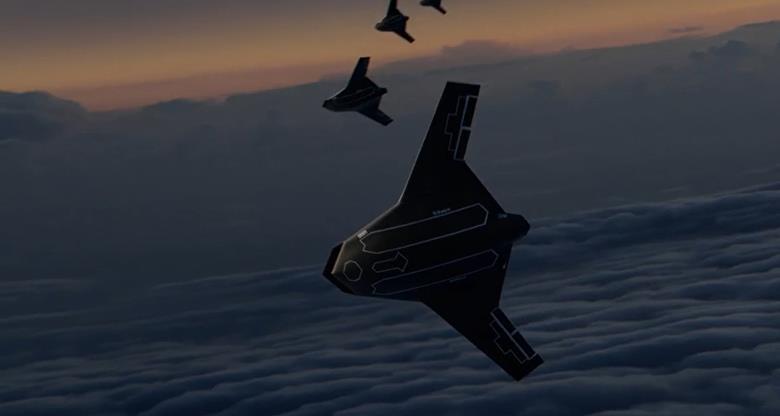
According to SheildAI, the X-BAT has an unrefueled range of 2,000 nautical miles, (about 2,300 miles or 3,700 kilometers). It boasts a service ceiling of 50,000 feet, matching the likes of the F-35 and F-16.
These capabilities significantly outpace today’s CCA drones in development from the Air Force’s Increment 1 contract awards, and likewise, are all but certain to exceed Increment 2’s requirements that are yet to come.
“X-BAT represents a reimagining of airpower. It requires no runways, is fully expeditionary, and delivers capabilities beyond the first Increment 1 CCAs, including electronic warfare, greater payload capacity, and extended range. We view Increment 1 CCAs as important and capable systems, designed to meet the initial set of program requirements. X-BAT, by contrast, was built to give combatant commanders geographically distributed long-range fires and effects,” Harris said.
In other words, like Lockheed Martin’s Vectis, ShieldAI’s X-BAT isn’t aiming for any of today’s incremental contracts meant to mature airpower autonomy in relatively single-minded platforms. Instead, it’s focused squarely on the not-too-distant future, when drone fighters are meant to be much more than just some extra rails for missiles to be launched from.
Promotional materials show the X-BAT flying with an air-to-air loadout of two AIM-120 AMRAAMs, which offer a broadly similar size and form function to the Air Force’s new beyond visual range AIM-260 Joint Advanced Tactical Missile, so it’s safe to assume it could stow those as well. It also shows the Navy’s new (and massive) 1,900-pound AIM-174B Gunslinger – an air-to-air missile with what could be 300+ mile range – carried via external pylon.
For air-to-ground operations, it shows a pair of 1,000-pound class AGM-154 Joint Stand Off Weapon C-1s, which are advanced glide-bombs with two-way data-links and multi-mode seekers that enable these weapons to close with stationary or even moving targets at ranges of around 80 miles. Externally, it’s shown carrying an AGM-158C Long Rang Anti-Ship Missile, or LRASM, which is an incredibly advanced cruise missile designed to use onboard artificial intelligence to hunt for, locate, and identify enemy warships before distributing them among other local weapons and finally, determining the most vulnerable point on the warship to strike. These weapons are even heavier than the AIM-174, at 2,760 pounds.
The aircraft is shown to have an electronic warfare suite, with the leading edges of its wings and the part of the nose of the aircraft highlighted. These could indicate conformal antennas, DRFM (digital radio frequency memory) modules, or other sensor nodes used to soak up or broadcast different forms of electromagnetic energy. These materials also list a “fire control radar,” which, depending on whether it’s an Active Electronically Scanned Array, may also play a role in the aircraft’s electronic warfare capabilities, though it also highlights the X-BAT’s modular avionics bay, which makes it possible to quickly swap systems – and capabilities – into and out of the aircraft. In order to offer such impressive range, the majority of the top of the fuselage is relegated to fuel storage.
Related: China is building the world’s first aircraft carrier for drones
All these are class-leading capabilities, but what truly makes the X-BAT so strategically valuable, is its ability to take off and land vertically just like the long-forgotten tail-sitters of the 1950s. This allows X-BATs to be launched from just about anywhere you can reach with the aircraft’s self-stabilizing trailer, called the launch/recovery vehicle, or LRV. When it’s time to launch the aircraft, its blast shield is lowered while the wings fold out, and then the aircraft is lifted into the vertical launch position. According to Shield AI, you can place three X-BAT LRVs in the same space as one legacy fighter.
This makes for an exceedingly small footprint, allowing for these aircraft to be pre-positioned in a wide variety of austere environments, or just as importantly, from the decks of any surface ship with room for a trailer-sized launch pad. When the mission is over, the X-BAT can return to where it was launched or anywhere else with LRVs for recovery.
The only area where the X-BAT may fall short of some other combat drones is in aerobatics, as its expected to be limited to 4 G maneuvers, but that isn’t exactly surprising. With a very stealthy design, the X-BAT is meant to hunt like a stealth fighter, rather than duke it out like a Cold War cowboy.
One of the biggest selling points of the X-BAT is its ability to operate autonomously, even in GPS and communications-denied environments, and that requires a great deal of software complexity. The underlying digital backbone of the X-BAT is ShieldAI’s Hivemind mission autonomy software, which importantly, leverages edge-computing within its broader network – and in this context, that means these drones carry the necessary hardware onboard to carry out tasks as they’re assigned, rather than relying on guidance being provided by human operators via other networked assets. Of course, these platforms still take those tasks from human operators, but because of the level of autonomy provided by Hivemind, a single operator can manage entire formations of X-Bats – which also makes these aircraft very capable options for future Air Force or Navy Collaborative Combat Aircraft contracts, as that human operator could easily be in a cockpit, rather than on a ship or the ground.
And it’s in that AI-based autonomy that ShieldAI truly shines. The firm has been developing drone autonomy capabilities since its founding a decade ago.
In 2021, the quickly growing firm announced its acquisition of Heron Systems – a name that might ring a bell if you’ve been following DARPA’s AI fighter pilot efforts. (In 2019, DARPA kicked off its AlphaDogfight trials, which pitted a group of AI system developers against one another in simulated F-16 within visual range, guns-only dogfights. The winner, Heron Systems, was able to pit its AI fighter pilot against a real human F-16 pilot in a simulated environment.)
The Heron AI was both precise and aggressive (maybe moreso than a human pilot would have been). But that combination worked, with Heron’s AI ultimately going undefeated against the human fighter pilot in five consecutive bouts.
ShieldAI currently plans a very aggressive timeline: it wants to begin VTOL and then further flight testing in fall 2026, with the aircraft ready for service by 2028 and in production starting in 2029.
Feature Image: Shield AI’s X-BAT drone. (Shield AI)
Read more from Sandboxx News
- New advances in submarine detection could upend nuclear deterrence as we know it
- These aircrew survival weapons have ensured US airmen stayed alive in rough situations
- Could Northrop’s YF-23 have been better than the F-22?
- In the Army what goes around comes around
- 5 benefits that martial arts can have for veterans
Related Posts
Sandboxx News Merch
-
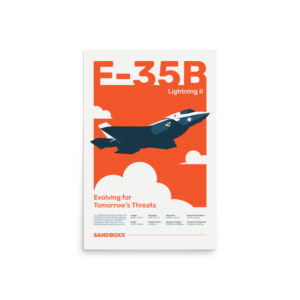
F-35 ‘Evolution’ Poster
$22.00 – $28.00Price range: $22.00 through $28.00 Select options This product has multiple variants. The options may be chosen on the product page -

A-10 ‘Thunderbolt Power’ Framed Poster
$45.00 – $111.00Price range: $45.00 through $111.00 Select options This product has multiple variants. The options may be chosen on the product page

Alex Hollings
Alex Hollings is a writer, dad, and Marine veteran.
Related to: Airpower

How Colombia’s drug cartels almost bought a Soviet submarine
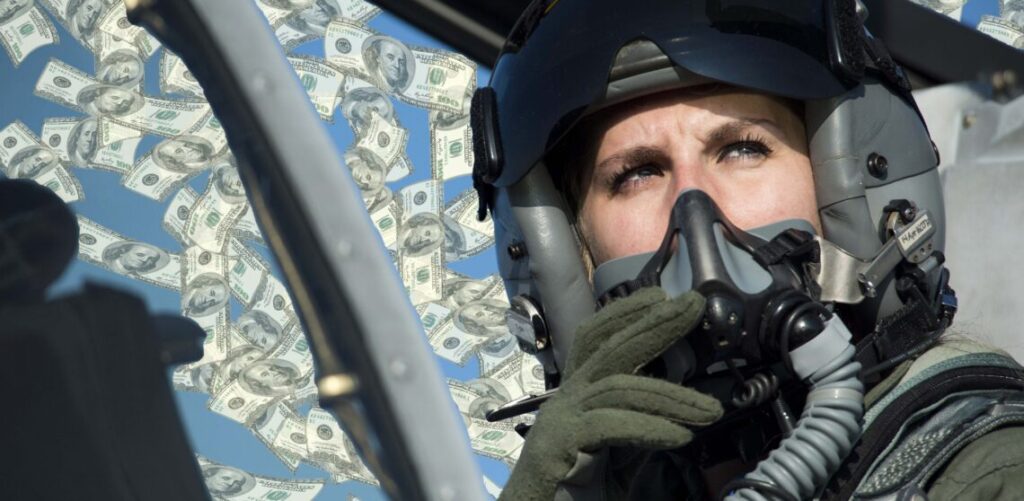
How much does it cost to train an Air Force pilot? A LOT
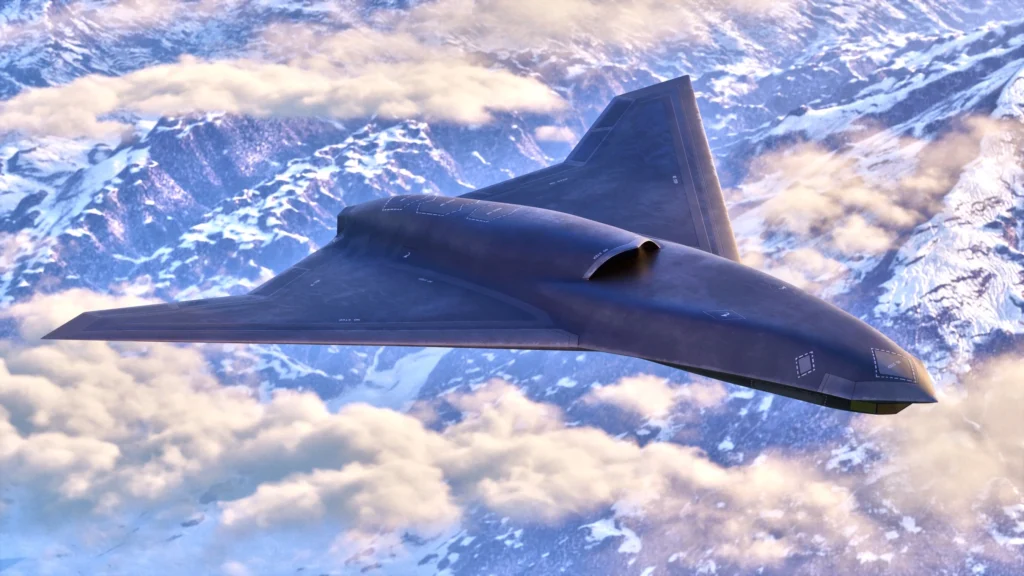
Lockheed Martin’s ‘Vectis’ promises to be the most advanced drone fighter ever built
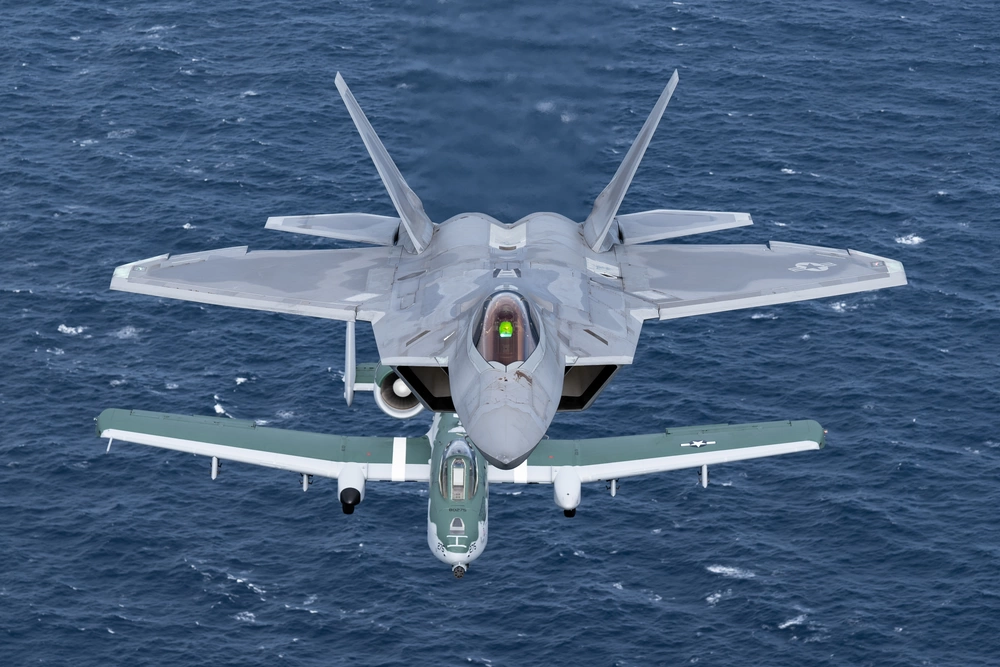
Why the Navy never put the F-22 on aircraft carriers
Sandboxx News
-

‘Sandboxx News’ Trucker Cap
$27.00 Select options This product has multiple variants. The options may be chosen on the product page -

‘AirPower’ Classic Hoodie
$46.00 – $48.00Price range: $46.00 through $48.00 Select options This product has multiple variants. The options may be chosen on the product page -

‘AirPower’ Golf Rope Hat
$31.00 Select options This product has multiple variants. The options may be chosen on the product page -

‘Sandboxx News’ Dad Hat
$27.00 Select options This product has multiple variants. The options may be chosen on the product page
